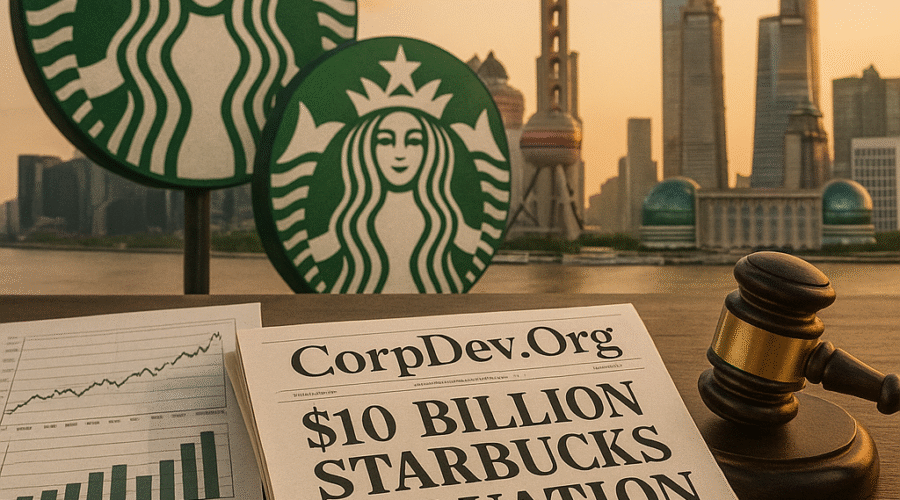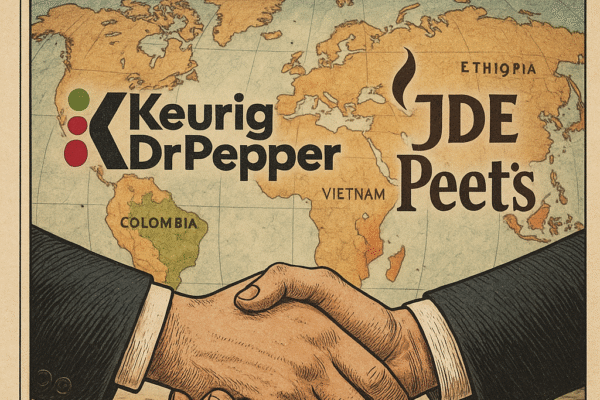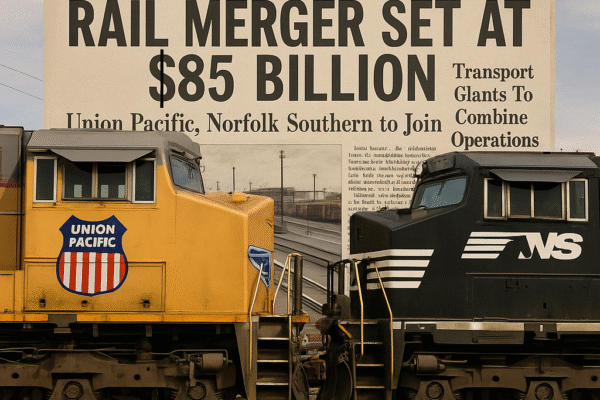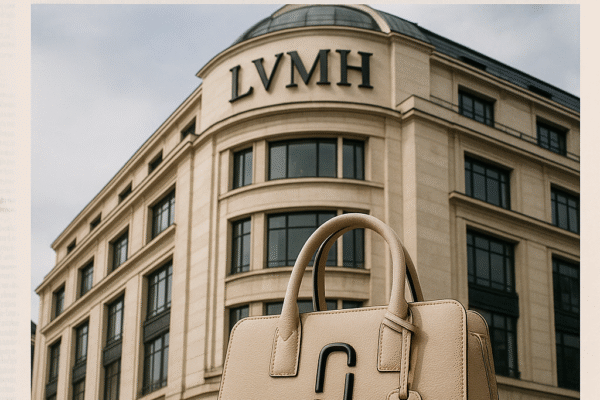Starbucks’ China division has attracted nearly 30 non-binding bids valuing the unit at up to $10 billion, with private equity giants Centurium Capital, Hillhouse Capital, Carlyle Group, and KKR emerging as leading contenders in a high-stakes auction that could reshape the coffee chain’s future in its second-largest market. The Seattle-based company is expected to retain approximately 30% ownership while distributing the remaining stake among multiple investors, with Goldman Sachs advising on a transaction unlikely to close before 2026 amid intensifying competition from local rivals like Luckin Coffee and Cotti that have eroded Starbucks’ market share from 34% to 14% since 2019[1][2][4][13][16]. This strategic review represents CEO Brian Niccol’s most significant move since assuming leadership in 2024, occurring against a backdrop of declining same-store sales and mounting pressure from activist investors Elliott Management and Starboard Value.
💼 Seasoned CorpDev / M&A / PE expertise
Bidding Dynamics and Transaction Architecture
Valuation Parameters and Bidder Landscape
Valuation estimates for Starbucks China range between $5-10 billion, with most offers clustering toward the upper threshold according to confidential bidding documents reviewed by financial advisors[4][13]. The auction has drawn approximately 30 domestic and international private equity firms, including Asia-focused Centurium Capital and Hillhouse Capital alongside U.S.-based Carlyle Group and KKR, each proposing distinct value-creation theses centered on digital transformation, supply chain optimization, and tier-3 city expansion[1][2][16]. Starbucks’ insistence on retaining operational influence manifests in the proposed 30% retained equity position, with the remaining stake fragmented among consortium members to prevent any single entity from controlling strategic decisions—a structure designed to preserve brand integrity while accessing local market expertise[2][4][17].
Transaction Timeline and Structural Complexities
Goldman Sachs anticipates shortlisting bidders within 60 days, though the complexity of multi-party negotiations and regulatory approvals makes a 2025 closing improbable[2][13]. The transaction’s architecture involves unprecedented cross-border capital flows, requiring coordination between China’s State Administration of Foreign Exchange, U.S. Treasury Department, and multiple tax jurisdictions—regulatory hurdles compounded by Starbucks’ insistence on maintaining control over its Kunshan Coffee Innovation Park, the $209 million roasting facility supplying all China stores[13][16]. Contingent value rights are being negotiated to bridge valuation gaps, linking payouts to post-transaction same-store sales growth targets and market share recovery metrics against Luckin Coffee’s expanding footprint[4][13].
Strategic Imperatives Driving the Divestiture
Competitive Pressures and Market Erosion
Starbucks’ China market share collapsed from 34% in 2019 to 14% in 2024 as local competitors deployed aggressive pricing strategies and digital ordering ecosystems that undercut Starbucks’ premium positioning[4][13]. Luckin Coffee’s $1.1 billion revenue in Q1 2025—achieved through a franchise model emphasizing $2-3 price points—contrasts sharply with Starbucks’ $3 billion annual revenue at 30% higher price points, revealing vulnerability to China’s consumption downgrade trend[11][13]. The unit’s 14% year-over-year same-store sales decline in Q3 2024 triggered strategic reassessment, with ethnographic research revealing that 68% of defecting customers cited “value perception misalignment” rather than product quality concerns[9][13].
Leadership Transition and Operational Realignment
CEO Brian Niccol’s appointment in August 2024 signaled operational overhaul priorities, with his Chipotle turnaround experience informing the “Back to Starbucks” initiative that eliminated 1,100 corporate roles to refocus resources on store-level execution[9][16]. China-specific initiatives include June 2025’s price reductions averaging ¥5 ($0.70) across Frappuccino, Iced Shaken Tea, and Tea Latte categories—a tactical retreat from premium positioning that acknowledges local competitors’ pricing advantage[14]. The divestiture process accelerates Niccol’s stated strategy to “capitalize on strengths in this dynamic market” through partnerships that reduce capital intensity while accessing local expertise in real estate, technology, and supply chain management[9][12].
Market Context and Competitive Landscape
China Coffee Market Evolution
China’s coffee market has grown at 15.7% CAGR since 2020 to reach $25.3 billion in 2025, fueled by urbanization and white-collar workforce expansion, yet Starbucks’ revenue plateaued at $3 billion amid share erosion[11][13]. The emergence of “new retail” models combining e-commerce with hyperlocal delivery—exemplified by Luckin’s 6,500 stores optimized for 15-minute delivery—has reset consumer expectations around convenience, with Starbucks’ traditional café format losing relevance among time-poor urban professionals[13][14]. Euromonitor data indicates the $2-4 price segment now captures 61% of category growth versus 29% for Starbucks’ core $4+ segment, explaining the strategic imperative for menu re-engineering and partnership structures that reduce operating costs[4][13].
Competitor Strategic Responses
Luckin Coffee’s franchisee-centric expansion to 10,000 stores by 2026 prioritizes tier-3 city penetration through capital-light models that require just 20-square-meter footprints, contrasting with Starbucks’ average 200-square-meter locations[13]. Meanwhile, Cotti Coffee’s $200 million Series D funding in March 2025 accelerates its “store-within-store” strategy embedding coffee counters in convenience chains, leveraging existing traffic to achieve customer acquisition costs 80% below Starbucks’ standalone locations[4]. These capital-efficient approaches have forced Starbucks to reconsider its fully-owned operating model, with the proposed stake sale enabling asset-light expansion through partners with superior local real estate networks and digital ecosystems[12][16].
Financial and Operational Implications
Capital Allocation and Shareholder Impact
A $10 billion valuation would represent 3.3x revenue multiple based on Starbucks China’s $3 billion fiscal 2024 revenue—a premium to Restaurant Brands International’s 2.8x multiple but discount to Luckin’s 5.2x, reflecting Starbucks’ growth challenges[11][13]. The transaction could generate $7 billion in after-tax proceeds assuming 70% stake sale, potentially funding $5 billion in accelerated U.S. store remodels and $2 billion in share repurchases to satisfy activist investors[4][9]. However, retained earnings from China operations would decline proportionally, creating a 7-9% EPS headwind that requires offsetting through U.S. margin expansion and international franchise royalty growth[13].
Operational Transition Risks
Starbucks’ insistence on maintaining supply chain control while outsourcing store operations creates complex transition service agreements covering IT systems, loyalty program integration, and quality assurance protocols[13][17]. The Kunshan roasting facility’s $209 million investment complicates separation, with proposals ranging from long-term supply contracts to joint-venture ownership—each carrying distinct tax implications and transfer pricing challenges[13]. Employee retention represents another critical risk, with Starbucks China’s 60,000 “partners” (employees) potentially facing cultural misalignment with financial sponsors focused on cost rationalization, necessitating golden parachute provisions in the transaction documents[2][17].
Broader Market Implications
Private Equity’s China Consumer Thesis
The bidding war reflects private equity’s renewed confidence in Chinese consumption despite economic headwinds, with firms deploying “platform building” strategies that aggregate complementary brands. KKR’s simultaneous acquisition of Taiwanese bubble tea chain 50 Lan and Carlyle’s ownership of McDonald’s China create obvious operational synergies, suggesting Starbucks stores could become multi-brand hubs[16]. Centurium Capital’s $1.4 billion Fund IV specifically targets consumer brands with cross-border potential, viewing Starbucks China as an export vehicle for Chinese tea concepts to global markets[1][16]. These strategic rationales justify premium bids despite regulatory uncertainties, with firms betting that Starbucks’ brand equity provides political insulation amid U.S.-China tensions.
Cross-Border M&A Precedent Setting
The transaction establishes critical precedents for foreign brand localization in China, testing novel ownership structures that balance global brand standards with local operational control. The fragmented ownership model—with no single investor exceeding 30%—addresses regulatory concerns about foreign control while providing Starbucks veto rights over key decisions[2][17]. This template could influence pending deals including Yum China’s KFC division and Uniqlo’s mainland operations, demonstrating how multinationals can reduce geopolitical risk without full retreat. The deal’s success would validate “capital partnership” approaches that may accelerate foreign investment in China’s consumer sector despite trade tensions.
Conclusion: Strategic Inflection Point
Starbucks’ partial divestiture of its China operations represents a pragmatic adaptation to market realities, exchanging control for growth capital and local expertise essential to recapturing market share. The $10 billion valuation benchmark validates China’s long-term consumption story despite near-term headwinds, while the innovative ownership structure provides a blueprint for multinationals navigating geopolitical complexities. For CEO Brian Niccol, the transaction funds critical U.S. turnaround initiatives while outsourcing China’s growth challenges to specialists better equipped for the market’s next phase—a capital-efficient strategy that could become standard for global brands in emerging markets. As bids undergo final evaluation, the outcome will signal whether premium global brands can maintain relevance in China’s value-conscious landscape through hybrid ownership models that blend global prestige with local execution.
Sources
https://www.investing.com/news/stock-market-news/starbucks-china-attracts-bids-at-up-to-10-billion-valuation-cnbc-reports-4127528, https://www.esmmagazine.com/retail/starbucks-china-attracts-bids-at-up-to-10bn-valuation-report-291978, https://www.tradingview.com/news/reuters.com,2025:newsml_L6N3T60H0:0-starbucks-rises-on-cnbc-report-china-business-attracts-bids-for-up-to-10-billion-valuation/, https://www.benzinga.com/markets/asset-sales/25/07/46315542/starbucks-attracts-10-billion-in-bids-for-china-unit-amid-rising-competition, https://wmbdradio.com/2025/07/09/starbucks-china-attracts-bids-at-up-to-10-billion-valuation-cnbc-reports/, https://finimize.com/content/starbucks-china-bidding-war-heats-up-among-private-equity, https://www.schaeffersresearch.com/content/news/2025/07/09/starbucks-stock-perks-up-with-billion-dollar-china-bids, https://seekingalpha.com/news/4466035-starbucks-china-gets-up-to-10-billion-valuation-as-bidders-line-up---report, https://www.aol.com/starbucks-ceo-brian-niccol-refocuses-181314354.html, https://tiblio.com/research/tickers/SBUX?page=3, https://www.statista.com/statistics/1321732/china-starbucks-net-revenue/, https://ionanalytics.com/insights/mergermarket/starbucks-china-business-sale-likely-to-kick-off-in-2q25-sources/, https://economictimes.com/news/international/business/starbucks-says-it-is-not-currently-considering-a-full-sale-of-its-china-operations/articleshow/122038538.cms, https://www.yicaiglobal.com/news/starbucks-china-responds-to-hillhouse-takeover-rumors-says-it-is-exploring-growth-options, https://www.ainvest.com/news/bids-starbucks-china-chain-10-billion-2507/, https://pe-insights.com/kkr-fountainvest-and-pag-among-investors-eyeing-strategic-stake-in-starbucks-china/, https://www.borsaitaliana.it/borsa/notizie/radiocor/finance/dettaglio/starbucks-china-reportedly-attracts-bids-valuing-it-at-up-to-10-bln-usd-nRC_09072025_1508_451138576.html?lang=en





